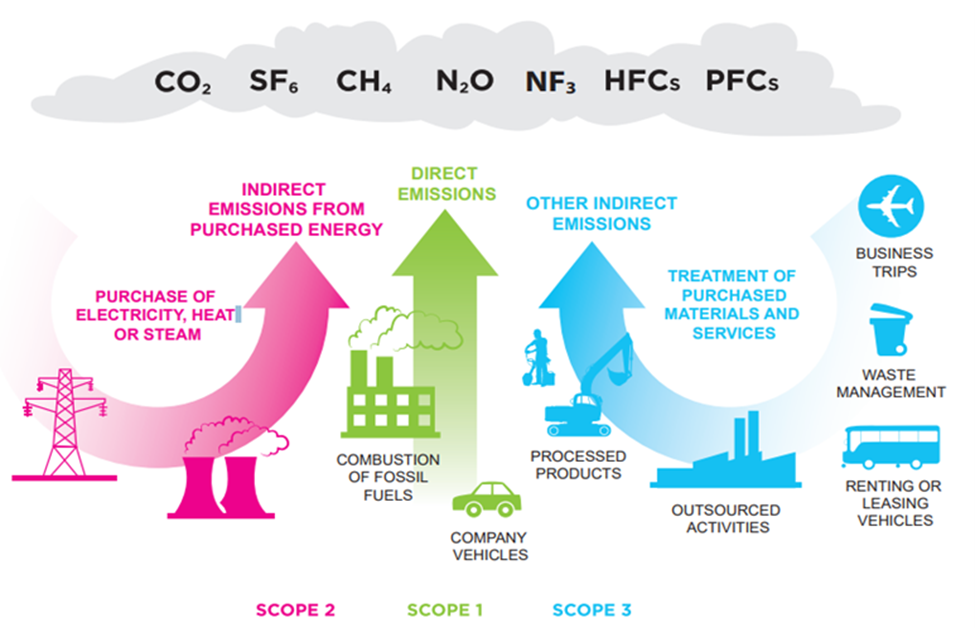Sustainability is not a one-dimensional concept but a multifaceted journey that involves understanding and addressing various layers of impact. When it comes to measuring and managing emissions, the three scopes—Scope 1, Scope 2, and Scope 3—offer a comprehensive view of an organization’s environmental footprint. Let’s delve into these scopes and uncover some eye-opening facts:
Scope 1: The Visible Emissions:
- Did you know that Scope 1 emissions are the most direct and easily identifiable greenhouse gas emissions? They stem from sources that an organization owns or directly controls, such as company vehicles, manufacturing processes, and on-site fuel combustion.
- Fun fact: The distinctive plumes from industrial smokestacks and the tailpipes of company vehicles are often indicative of Scope 1 emissions.
Scope 2: The Indirect Glow:
- Did you know that Scope 2 emissions are indirect and result from purchased or consumed energy? This includes electricity, heating, and cooling sourced from external providers. It’s like the environmental impact of your Netflix binge-watching, powered by electricity from the grid!
- Fun fact: Choosing renewable energy sources for electricity can dramatically reduce an organization’s Scope 2 emissions, making every episode of your favorite show a bit greener.
Scope 3: The Invisible Web:
- Did you know that Scope 3 emissions are often considered the trickiest to quantify? These indirect emissions result from the entire value chain, including suppliers, customers, and the use of products. From raw material extraction to end-of-life disposal, it’s a vast and interconnected web of impact.
- Fun fact: Scope 3 emissions are like the hidden ingredients in a recipe—you might not see them, but they play a crucial role in the final product.
The Scope 1-2-3 Dance:
- Did you know that organizations aiming for comprehensive sustainability often engage in a “Scope 1-2-3 dance”? This involves not only minimizing their direct emissions (Scope 1) and optimizing energy consumption (Scope 2), but also collaborating with suppliers and customers to reduce the entire value chain’s impact (Scope 3).
- Fun fact: The dance is a dynamic and ongoing process, with companies partnering with stakeholders to create a harmonious sustainability routine.
Sustainability: Beyond Carbon Counting:
- Did you know that sustainability is about more than just carbon counting? While scopes focus on greenhouse gas emissions, a holistic approach involves considering water usage, resource depletion, and social impacts. It’s like upgrading from a single instrument band to a full symphony of sustainable practices.
- Fun fact: Organizations adopting a broader sustainability mindset often find that addressing social and environmental concerns brings a range of benefits, from enhanced brand reputation to increased customer loyalty.
As we navigate the complex landscape of sustainability, understanding and acting upon the different scopes allows us to create meaningful change. From the smokestacks to the supply chains, each scope presents an opportunity for organizations to make a positive impact on the planet and pave the way for a more sustainable future.

